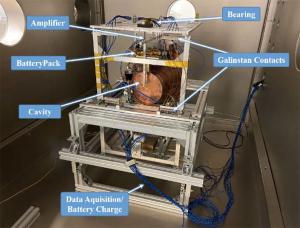Blog
Get Used to Disappointment
1 April 2021
Recently I’ve written about various efforts to devise an efficient way to travel to the stars. Stellar distances are so great that we almost need some physics-defying technology to get there. Ideas such as wormholes or warp drives have been proposed, but another avenue is the reactionless drive.
A reactionless drive would give a spacecraft thrust without a counter-thrust. If such a drive were possible, we could accelerate starships indefinitely with little power. Unfortunately, such a drive would violate Newton’s third law of motion. But that hasn’t stopped folks from trying to build one, and the most popular attempt is the EM Drive.
 M. Tajmar et al
M. Tajmar et alThe EM Drive gained popularity back in 2014 when it was announced that initial experiments proved it worked. The announcement was met with hard skepticism from the scientific community, not the least of which for the fact that the results hadn’t been submitted for peer review. When it finally was submitted, there was evidence of some small thrust that could be a reactionless effect, but could also be due to things such as thermal heating of the surrounding air.
This raised enough interest to get other research groups to look at the device, including a group at the Dresden University of Technology. After several years of study, the team has released new results, and you can probably guess what they are.1
The biggest challenge in confirming or refuting the EM Device is that the thrust effect is almost at noise level. You have to isolate the device from vibrations, air, and other background influences, which is difficult to do. But when the Dresden team did this, they found the thrust effect went away. Given the limits of their observations, they were able to show that even if there was some reactionless effect, it would be so tiny that you’d get more thrust if you just shined light out the back end of your spacecraft.
So, a reactionless drive doesn’t appear to be in our future.
Monette, Maxime, Matthias Kößling, and Martin Tajmar. “Experimental investigation of Mach-Effect thrusters on torsion balances.” Acta Astronautica (2021). ↩︎